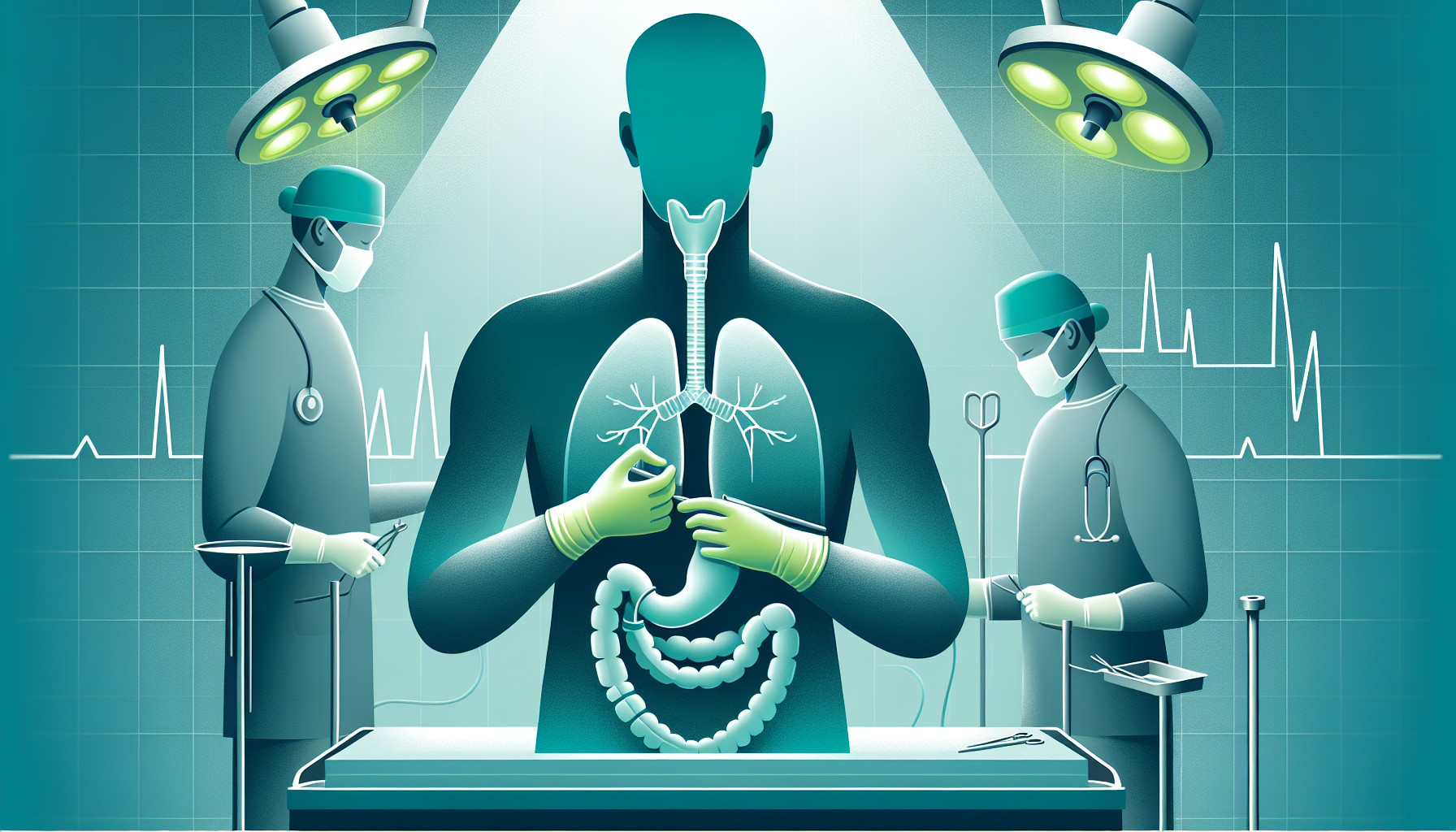Our Summary
This research paper is about a study conducted to evaluate the long-term outcomes of a surgical procedure called robot-assisted Ivor Lewis (RAIL) esophagectomy, which is a type of surgery used to treat esophageal cancer using robotic assistance. The study reviewed the records of 112 patients who had this procedure. Most of these patients (106 out of 112) had cancer, and the majority of them had a specific type of cancer called adenocarcinoma. Many of these patients also received chemotherapy and radiation therapy before the surgery.
The researchers tracked the patients’ survival rates and whether the cancer came back after the surgery. They found that the survival rates at 1, 3, and 5 years after the surgery were similar to the rates seen with other types of esophagectomy procedures that do not use robotic assistance. They also found that the rate of cancer coming back after the surgery was also similar to the rates seen with other types of esophagectomy procedures.
The researchers concluded that the RAIL procedure does not lead to worse outcomes compared to other types of esophagectomy procedures. This is important because the robotic assistance used in the RAIL procedure has several potential advantages, such as less blood loss and shorter hospital stays. Therefore, this study supports the use of the RAIL procedure for treating esophageal cancer.
FAQs
- What is the RAIL esophagectomy procedure and why is it used?
- What were the survival rates found in the study for patients who had the RAIL esophagectomy procedure?
- How do the outcomes of the RAIL procedure compare to other types of esophagectomy procedures?
Doctor’s Tip
A helpful tip a doctor might tell a patient about esophagectomy is to follow a strict post-operative care plan, which may include dietary restrictions, physical activity guidelines, and medication management. It is important to attend all follow-up appointments and communicate any symptoms or concerns to your healthcare team. Additionally, maintaining a healthy lifestyle, including quitting smoking and limiting alcohol consumption, can help improve recovery and long-term outcomes after esophagectomy.
Suitable For
Patients who are typically recommended for esophagectomy, including robot-assisted Ivor Lewis esophagectomy, are those with esophageal cancer that has not spread to other parts of the body. Esophagectomy may be recommended for patients with early-stage esophageal cancer, as well as for those with more advanced stages of the disease. Patients who have not responded well to other treatments such as chemotherapy or radiation therapy may also be candidates for esophagectomy. Additionally, patients who are in good overall health and able to tolerate surgery may be recommended for this procedure. It is important for patients to discuss their individual case with their healthcare provider to determine if esophagectomy is the best treatment option for them.
Timeline
Before the esophagectomy:
- Patient is diagnosed with esophageal cancer and undergoes tests to determine the extent of the cancer
- Patient may undergo chemotherapy and radiation therapy to shrink the tumor before surgery
- Patient meets with a surgeon to discuss the esophagectomy procedure and potential risks and benefits
- Patient undergoes pre-operative testing and preparation for the surgery
- Patient is admitted to the hospital for the esophagectomy procedure
After the esophagectomy:
- Patient undergoes the RAIL esophagectomy procedure with robotic assistance
- Patient spends time in the hospital recovering from the surgery, typically around 1-2 weeks
- Patient may experience side effects such as pain, difficulty swallowing, and fatigue
- Patient begins a diet progression starting with clear liquids and advancing to solid foods
- Patient may receive physical therapy to improve mobility and strength
- Patient undergoes follow-up appointments and tests to monitor for cancer recurrence
- Patient may require additional treatment such as chemotherapy or radiation therapy depending on the stage of the cancer
- Patient adjusts to life after the surgery, including changes in diet and lifestyle to manage any long-term side effects
Overall, the patient goes through a challenging journey both before and after the esophagectomy, but with proper care and support, they can achieve positive outcomes and improve their quality of life.
What to Ask Your Doctor
Some questions a patient should ask their doctor about esophagectomy, specifically the robot-assisted Ivor Lewis (RAIL) esophagectomy, may include:
- What is the purpose of the surgery and why is the RAIL procedure recommended for me?
- What are the potential risks and complications associated with the RAIL esophagectomy?
- How experienced is the surgical team with performing RAIL esophagectomies?
- What is the recovery process like after the surgery and how long will it take?
- How will my diet and eating habits need to be adjusted after the surgery?
- What are the long-term outcomes and survival rates associated with the RAIL esophagectomy?
- Will I need additional treatments such as chemotherapy or radiation therapy after the surgery?
- How often will I need to follow up with my doctor after the surgery?
- Are there any lifestyle changes I should make to improve my overall health and reduce the risk of cancer recurrence?
- What support services are available to help me cope with the emotional and physical challenges of undergoing an esophagectomy?
Reference
Authors: Kandagatla P, Ghandour AH, Amro A, Popoff A, Hammoud Z. Journal: J Robot Surg. 2022 Feb;16(1):119-125. doi: 10.1007/s11701-021-01219-2. Epub 2021 Feb 27. PMID: 33638759
